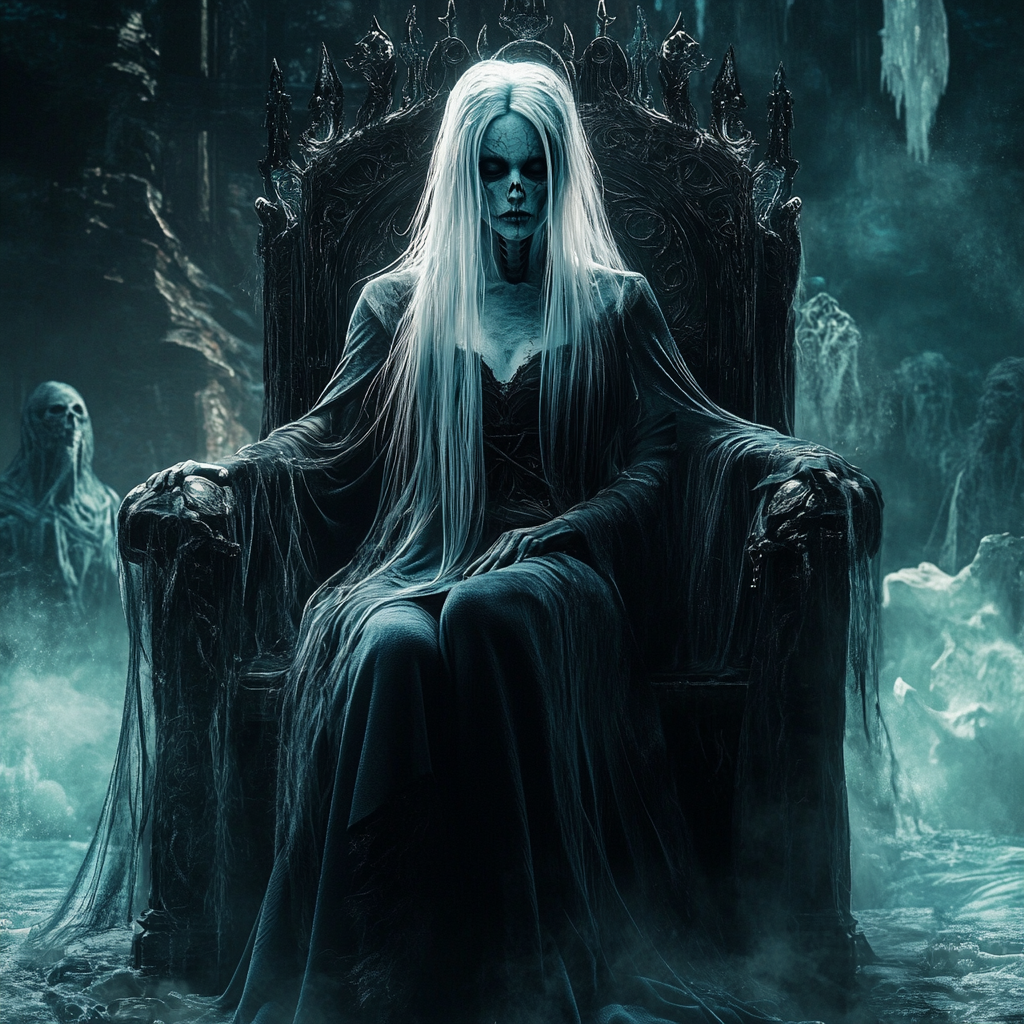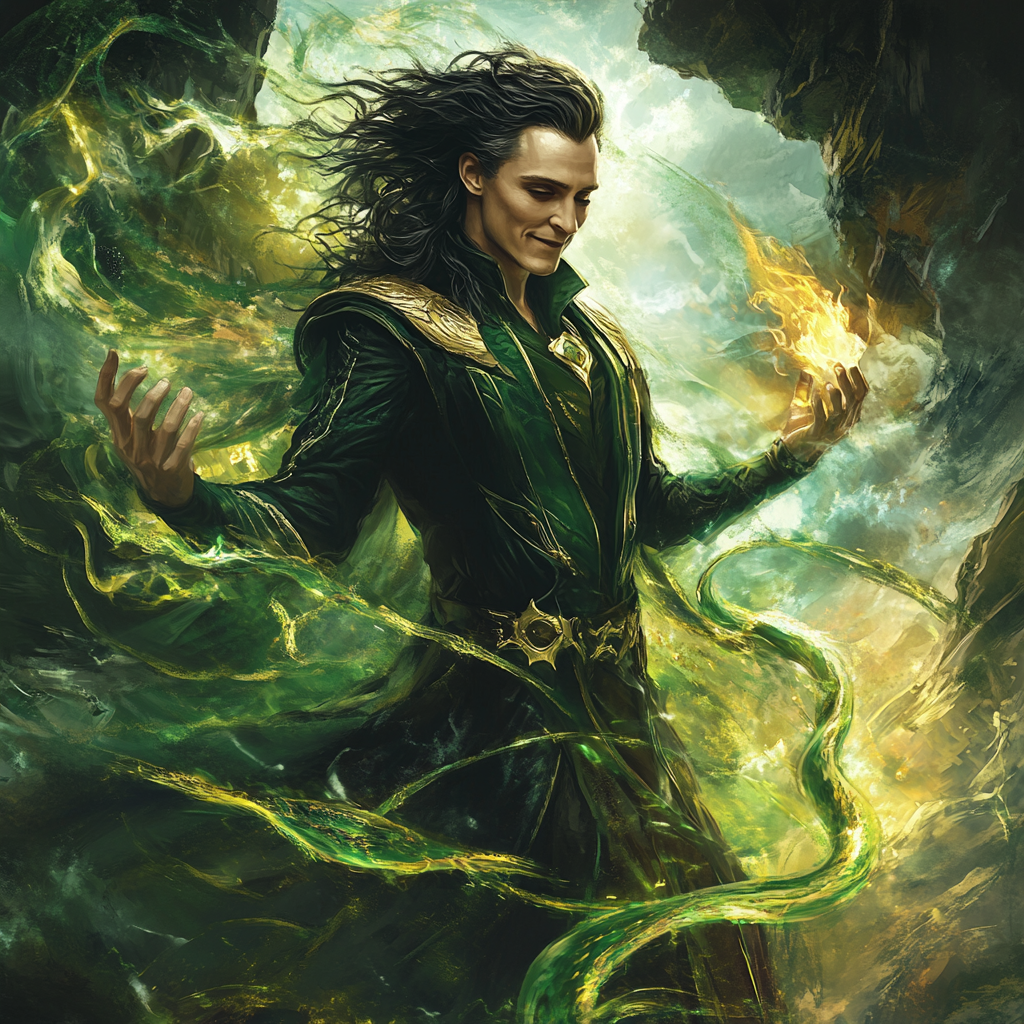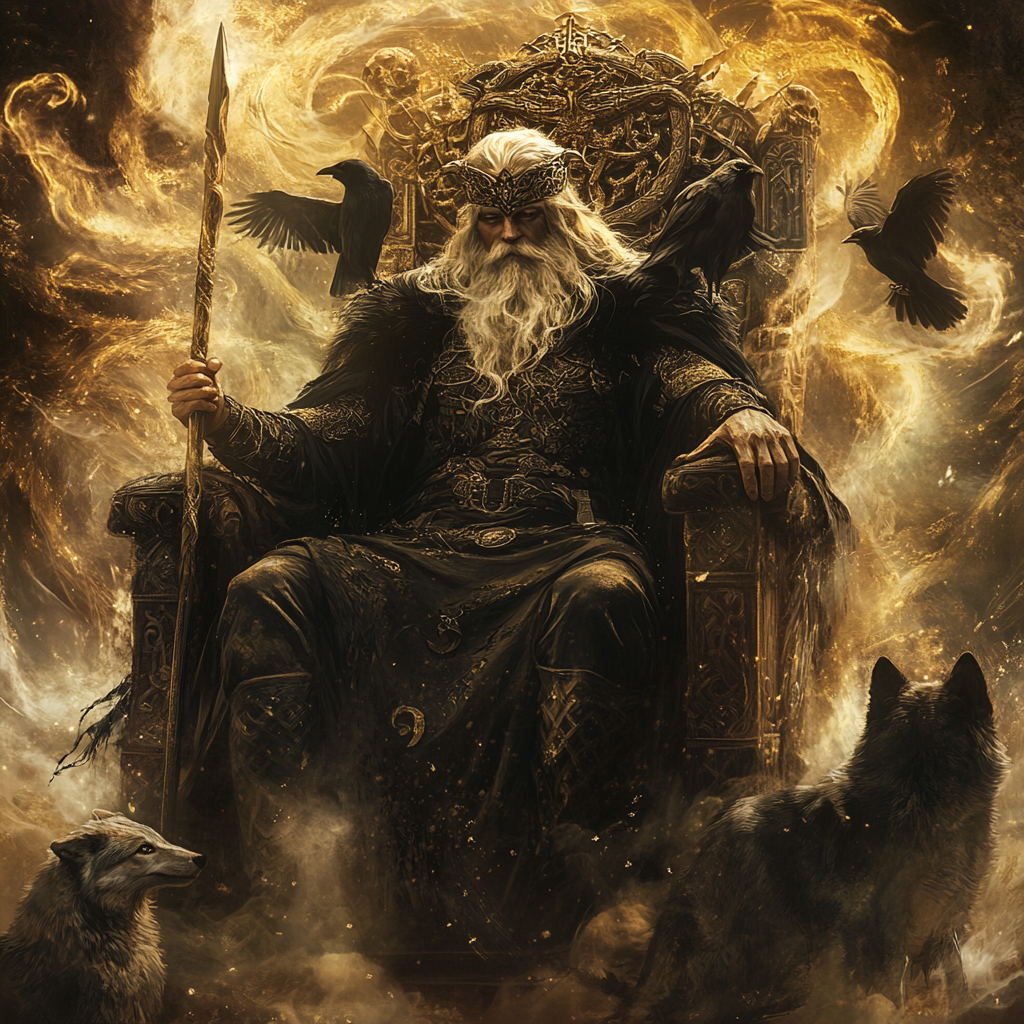Thor and Odin are for sure some of the most popular gods in mythology, but the Norse Pantheon has more to offer. Lets have a look!
Grading Criteria: N/A
10: Sif

Sif, known for her golden hair, which symbolizes fertility, abundance, and the bounty of the earth. She is the wife of Thor, the god of thunder, and is often associated with the prosperity of crops and the fields. Sif’s golden locks are not only a symbol of beauty but also of the harvest, representing the ripening fields of wheat and the blessings of a fruitful land. Sif’s hair plays a key role in one of the most famous myths involving Loki, the trickster god. Loki mischievously cuts off her hair, enraging Thor. To make amends, Loki commissions the dwarves to craft a new head of hair for Sif from pure gold. The dwarves create hair so fine and radiant that it attaches to her scalp and grows like real hair, restoring her beauty and reinforcing her symbolic connection to the earth’s riches.
9: Frigga

Frigg, also known as Frigga, is one of the most prominent goddesses in Norse mythology, revered as the queen of the Aesir and the wife of Odin. She is the goddess of love, marriage, motherhood, and domestic life, as well as a figure of wisdom and foresight. Her role as a protector of families and her association with the hearth make her a nurturing yet powerful presence in the Norse pantheon. Frigg is known for her ability to see the future, though she rarely reveals what she knows. This gift underscores her deep wisdom and connection to fate. Her role as a mother is central to the tragic story of her son Baldur, the god of light. Knowing of Baldur’s prophesied death, Frigg extracted oaths from all things in the world to never harm him—except for mistletoe, which she deemed too insignificant to pose a threat. Loki exploited this oversight, leading to Baldur’s death and cementing Frigg’s grief as a poignant symbol of maternal love and loss.
8: Hel

Hel is somber ruler of the underworld, ruling over the realm of the same name, Helheim. She is the daughter of Loki, the trickster god, and the giantess Angrboða, making her a sibling to the monstrous wolf Fenrir and the World Serpent, Jörmungandr. As the keeper of the dead, Hel oversees the souls of those who did not die heroically in battle—farmers, the elderly, and others who pass peacefully or ignobly. Hel is often depicted as a strikingly dual-natured figure, with one half of her body appearing as a living, beautiful woman and the other as a decayed corpse. This stark dichotomy symbolizes her role as a bridge between life and death and her dominion over the boundary between the two. Her realm, Helheim, lies in the cold, misty region of Niflheim, far from the warmth and light of the upper worlds. It is not a place of punishment but a shadowy, neutral afterlife where souls await their final fate. However, Hel herself is often portrayed as stern and unyielding, embodying the inevitability of death.
7: Heimdall

Heimdall is one of the most vigilant and noble gods, revered as the guardian of the Bifröst, the shimmering rainbow bridge that connects Asgard to the mortal world of Midgard. Known as the “White God,” Heimdall is the ever-watchful sentinel who protects the gods from any threat, especially from the forces of chaos led by Loki. Heimdall is described as possessing extraordinary senses, far beyond those of any other being. He can hear the grass grow and the wool on sheep, and his eyesight is so sharp that he can see across vast distances, even in the darkest of nights. To aid in his watchful duty, Heimdall requires little sleep, making him the perfect guardian for Asgard. He carries the mighty Gjallarhorn, a resounding horn that can be heard across all the Nine Realms when blown. Heimdall will sound this horn at Ragnarok, alerting the gods to the arrival of their final battle. He is also armed with a formidable sword, prepared to defend Asgard against any intrusion. Heimdall’s origins are shrouded in mystery, but he is said to be born of nine mothers, often interpreted as personifications of the waves, giving him a connection to both the earth and the sea. His wisdom, fairness, and unwavering duty make him a paragon of vigilance and responsibility.
6: Freya

Freya is one of the most renowned goddesses in Norse mythology, embodying a fascinating duality as the goddess of love, beauty, fertility, and sensuality, as well as war, death, and magic. A member of the Vanir tribe of gods, Freya became associated with the Aesir after the two tribes reconciled. Freya is the most beautiful of the Norse deities, often described as golden-haired and radiant. She is deeply connected to themes of passion and desire, and her tears are said to turn into gold when she weeps. As a symbol of fertility, she is called upon to bless marriages, crops, and childbirth. However, her power extends far beyond her enchanting beauty. Freya is also a fierce warrior and a goddess of death. She leads the Valkyries in choosing half of the slain warriors from battlefields to reside in her hall, Fólkvangr, while the other half go to Odin’s Valhalla. This association with death and war showcases her strength and fearlessness. A master of seiðr, a form of Norse magic, Freya is a practitioner of divination, manipulation of fate, and communication with the spirit world. Her magical necklace, Brísingamen, crafted by dwarves, is one of her most treasured possessions and symbolises her allure and mystic power.
5: Tyr

Týr is the god of war, law, and justice. Known for his unwavering bravery and commitment to fairness, Týr represents the principles of honor, self-sacrifice, and the rule of law. He is a god who values the greater good over personal gain, making him a symbol of courage and responsibility. One of Týr’s most famous myths involves his encounter with Fenrir, the monstrous wolf. When the gods sought to bind Fenrir with the magical chain Gleipnir, the wolf agreed to the binding only if one of the gods placed their hand in his mouth as a gesture of trust. Knowing the binding would hold and that Fenrir would bite down, Týr willingly sacrificed his hand, losing it to ensure the safety of the cosmos. This act of selflessness solidified Týr’s reputation as the embodiment of duty and honor. Týr’s role in mythology extends beyond war and conflict; he is also a protector of truth and justice, presiding over disputes and ensuring fair outcomes. Unlike Odin, who often uses cunning and deception, Týr’s approach is direct and principled, reflecting his steadfast character. Though his prominence was somewhat overshadowed by other gods like Thor and Odin in later traditions, Týr was once considered among the chief deities of the Norse pantheon, as evidenced by his association with Tiwaz, a rune symbolizing victory and honor.
4: Baldr

Baldr, also spelled Baldur, is one of the most radiant and revered gods, often associated with light, beauty, love, and purity. Unlike his portrayal in the 2018 God of War Game. The son of Odin and Frigg, Baldr is described as the most beloved among the gods, embodying goodness and grace. His name means “brave” or “shining one,” and his presence is said to bring joy and peace to all who encounter him. Baldr’s life and tragic death are central to Norse mythology. Haunted by a prophecy foretelling his demise, his mother, Frigg, sought to protect him by extracting oaths from all things in the cosmos not to harm him—except for mistletoe as we already know she did not thing mistletoe could ever pose a threat. This protection made Baldr seemingly invincible, and the gods amused themselves by throwing weapons and objects at him, which would harmlessly bounce off. However, Loki, the cunning trickster, exploited this vulnerability. He fashioned a spear or dart from mistletoe and gave it to Baldr’s blind brother, Höðr, who unknowingly struck and killed Baldr. His death plunged the gods into deep mourning and marked the beginning of events leading to Ragnarok.
3: Loki

Loki is one of the most complex gods, known as the trickster god of chaos, cunning, and transformation. A member of the Aesir by association but born of the Jötunn (giants), Loki’s dual nature embodies both creation and destruction, making him a pivotal yet unpredictable force in the Norse cosmos. Loki is a master of deception and shapeshifting, taking on countless forms—man, woman, animal, and even objects—to carry out his schemes. His intelligence, wit, and charm make him both an asset and a liability to the gods. While he often helps them in critical moments, his actions frequently lead to trouble, forcing him to undo his own mischief. He has many representations in pop culture which have each given different perspectives but they all pinpoint his mischievous nature. He plays an essential role in Raganrok, Loki will break free from his imprisonment after orchestrating the death of Baldr, leading the forces of chaos against the gods in a final, apocalyptic battle, where he and Heimdall are fated to kill each other.
2: Odin

Odin, also known as the All-Father, is the central figure in Norse mythology, revered as the god of wisdom, war, poetry, and death. As the ruler of Asgard and the chief of the Aesir gods, Odin is a complex and multifaceted deity, embodying both the intellectual pursuit of knowledge and the ruthless tactics of battle. Odin is often depicted as a one-eyed, cloaked figure, carrying his spear Gungnir and accompanied by his two ravens, Hugin and Muni. His missing eye is a mark of his relentless thirst for wisdom; he sacrificed it at Mimir’s Well in exchange for a drink that granted him unparalleled knowledge. This sacrifice reflects his role as a seeker of truth and understanding, even at great personal cost. He selects fallen warriors from the battlefield to join the einherjar in Valhalla, where they train for the final battle of Ragnarok. His role as a chooser of the slain aligns with his association with death, magic, and fate. Odin is also the god of poetry and inspiration, often engaging in magical practices such as seiðr, a form of shamanic sorcery. His quest for knowledge includes hanging himself from the branches of Yggdrasil, the World Tree, for nine days and nights, sacrificing himself to himself to gain the secrets of the runes—a powerful system of magic and writing. Despite his wisdom, Odin is a god of paradoxes: he is both a wise king and a cunning trickster, a patron of heroes and a manipulative figure willing to betray or deceive to achieve his goals. His many titles—such as The Wanderer, The Wise One, and The God of the Hanged—reflect his diverse nature and the wide-ranging scope of his influence.
1: Thor

Thor, the Norse god of thunder, storms, and strength, is one of the most well-known and beloved figures in Norse mythology and mythology as a whole. As the son of Odin, the All-Father, and the earth goddess Jörð, Thor is both a protector of the gods and a defender of humanity. He embodies raw physical power, courage, and an unwavering commitment to maintaining order in the face of chaos. Thor is often depicted as a towering figure with fiery red hair and beard, wielding his iconic hammer, Mjölnir, a symbol of his unmatched strength and ability to destroy his enemies. Thor travels in a chariot drawn by two goats, Tanngrisnir and Tanngnjóstr, which he can kill and eat, only to resurrect them with Mjölnir. He is often accompanied by his wife, Sif, and his children, including Magni and Modi, who will survive Ragnarok and carry on his legacy. Known for his fierce battles against the Jötnar (giants), Thor is a tireless defender of both Asgard and Midgard. Among his most famous foes is Jörmungandr, the World Serpent. Thor and the serpent are destined to face each other during Ragnarok, the final battle. While Thor will kill Jörmungandr, he will succumb to its venom shortly after, marking his heroic end.
Honourable Mention: Vidar

A lesser known god in Norse mythology ,Víðarr is an intriguing god, known as the god of vengeance, silence, and resilience. A son of Odin and the jötunn Gríðr, Víðarr is a quiet yet immensely powerful figure, often described as the “Silent God” due to his reserved and contemplative nature. Víðarr is destined to play a crucial role during Ragnarok, the apocalyptic end of the world. As the prophecy foretells, he will avenge his father, Odin, by slaying the monstrous wolf Fenrir, who devours Odin during the final battle. Víðarr achieves this feat with the help of his extraordinary strength and a magical shoe made from all the scraps of leather discarded by shoemakers. This shoe grants him the ability to step into Fenrir’s jaws and rip them apart, securing his victory. Víðarr’s immense strength is second only to Thor, and he is considered one of the few gods to survive Ragnarok. Alongside his half-brother Váli, he will help rebuild the world in the aftermath of its destruction, symbolizing renewal and the continuation of life.
Other Contenders
Freyr – Brother to Freya, God of fertility, prosperity, and good harvests, and a bringer of peace.
Váli – God of vengeance, born to avenge the death of Baldr.
Bragi – God of poetry, music, and eloquence.

